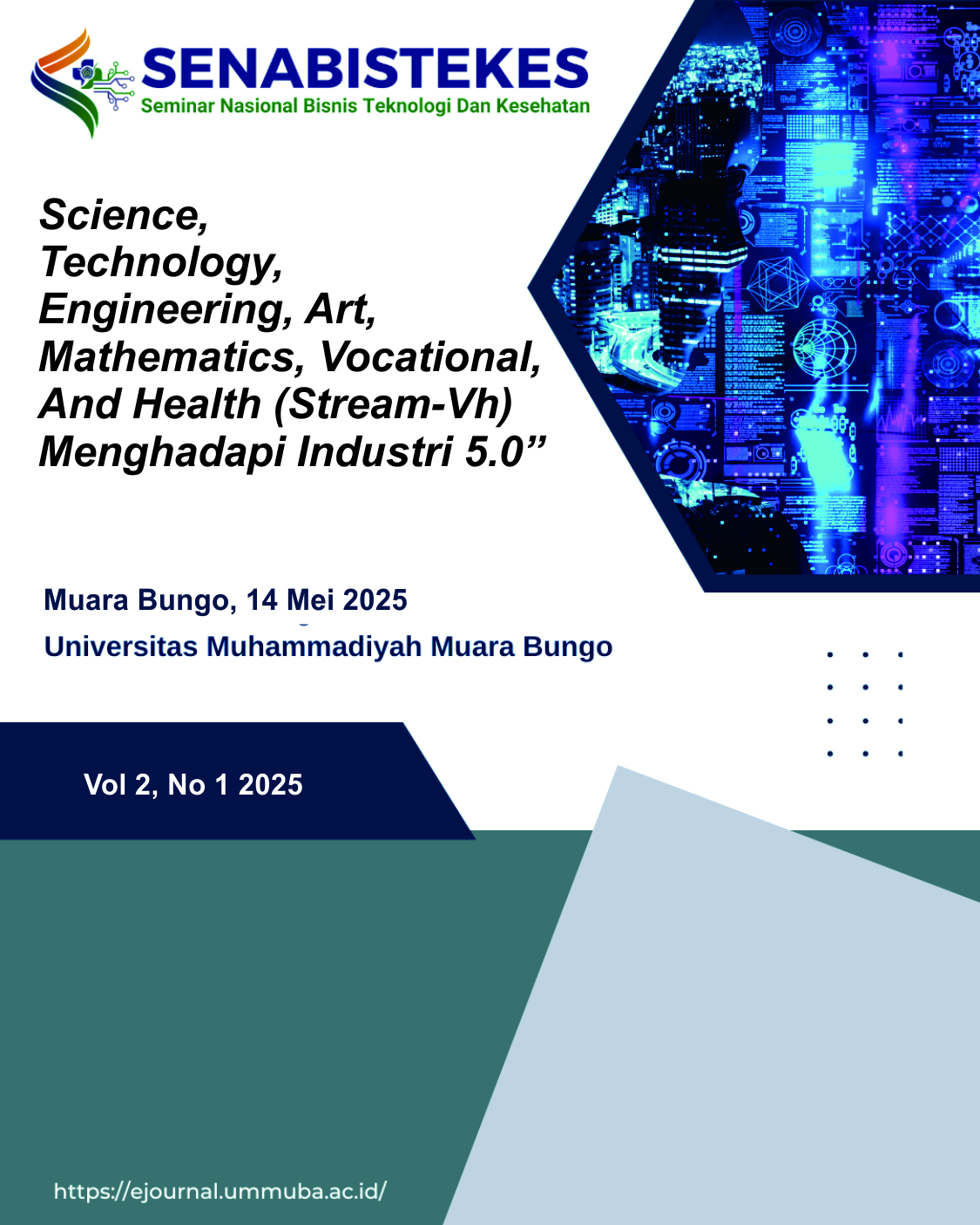DAMPAK KEKERASAN PASANGAN INTIM (INTIMATE PARTNER VIOLENCE) TERHADAP LUARAN KEHAMILAN DAN STATUS GIZI ANAK: LITERATURE REVIEW
Abstract
Kekerasan pasangan intim merupakan masalah kesehatan masyarakat yang serius karena berdampak negatif terhadap luaran kehamilan dan status gizi anak. Tinjauan literatur ini merangkum bukti terkait dampak kekerasan pasangan intim terhadap kedua aspek tersebut. Basis data scopus digunakan untuk mengidentifikasi artikel dari tahun 2014 hingga tahun 2025. Desain penelitian kohort, cross-sectional, dan case control dimasukkan pada tinjauan literatur ini. Hasil tinjauan menunjukkan bahwa kekerasan pasangan intim berhubungan signifikan dengan luaran kehamilan yang negatif seperti kelahiran prematur dan berat badan lahir rendah, serta masalah gizi pada balita seperti wasting dan stunting. Untuk mencegah dampak kesehatan ini, pemangku kepentingan disarankan mengintegrasikan skrining gangguan kesehatan mental dan kekerasan pasangan intim selama kehamilan dalam pelayanan antenatal.
References
WHO, Violence against women prevalence estimates, 2018. World Health Organization, 2021.
D. Mondal and P. Paul, “Association between intimate partner violence and child nutrition in India: Findings from recent National Family Health Survey,” Child. Youth Serv. Rev., vol. 119, no. 105493, 2020.
S. Garg, R. Rustagi, M. M. Singh, and K. Engtipi, “Effect of Intimate Partner Violence on Maternal and Birth Outcomes of Pregnancy among Antenatal Clinic Attendees in Delhi: A Prospective Observational Study,” Indian J. Community Med., vol. 45, pp. 501–505, 2020.
G. Melaku, S. B. Getahun, M. Abebe, S. Shumye, and S. Semagn, “The Association Between Domestic Violence and Adverse Pregnancy Outcomes in Pregnant Women Seeking Antenatal Care at Public Hospitals in Gedeo Zone: A Prospective Cohort Study,” J. Multidiscip. Healthc., vol. 16, pp. 1833–1843, 2023.
E. Berhanie, D. Gebregziabher, H. Berihu, A. Gerezgiher, and G. Kidane, “Intimate partner violence during pregnancy and adverse birth outcomes: A case-control study,” Reprod. Health, vol. 16, no. 22, 2019.
S. Yaya, E. K. Odusina, N. K. Adjei, and O. A. Uthman, “Association between intimate partner violence during pregnancy and risk of preterm birth,” BMC Public Health, vol. 21, no. 1610, 2021.
H. Demelash, D. Nigatu, and K. Gashaw, “A Case-Control Study on Intimate Partner Violence during Pregnancy and Low Birth Weight, Southeast Ethiopia,” Obstet. Gynecol. Int., vol. 2015, 2015.
T. Laelago, T. Belachew, and M. Tamrat, “Effect of intimate partner violence on birth outcomes,” Afr. Health Sci., vol. 17, no. 3, pp. 681–689, 2017.
Y. Gao, S. Zhao, Y. Zhou, J. Zhou, and K. Tang, “Maternal experiences of multiple forms of intimate partner violence and associations with undernutrition among children under 5: evidence from 36 low- and middle-income countries based on demographic and health surveys,” BMJ Glob. Heal., vol. 10, no. e017114, 2025.
M. P. A. Lakhdir et al., “Association between maternal experiences of intimate partner violence and child stunting: A secondary analysis of the Demographic Health Surveys of four South Asian countries,” BMJ Open, vol. 14, no. e071882, 2024.
H. H. Neamah et al., “Intimate partner violence, depression, and child growth and development,” Pediatrics, vol. 142 (1), no. e20173457, 2018.
J. Chai et al., “Association between intimate partner violence and poor child growth: results from 42 demographic and health surveys,” Bull. World Health Organ., vol. 94, pp. 331–339, 2016.
K. Lin et al., “The relationship between intimate partner violence and child malnutrition: a retrospective study in 29 sub-Saharan African countries,” Front. Public Heal., vol. 11, no. 1231913, 2024.
T. O. Okunola, J. O. Awoleke, B. A. Olofinbiyi, B. O. Rosiji, S. Omoya, and A. O. Olubiyi, “Adverse birth outcomes among women exposed to intimate partner violence in pregnancy in Ikere-Ekiti, South-west Nigeria: A prospective cohort study,” Eur. J. Obstet. Gynecol. Reprod. Biol., vol. 267, pp. 186–191, 2021.
G. N. Sigalla et al., “Intimate partner violence during pregnancy and its association with preterm birth and low birth weight in Tanzania: A prospective cohort study,” PLoS One, vol. 12 (2), no. e0172540, 2017.
M. Steele-Baser et al., “Intimate Partner Violence and Pregnancy and Infant Health Outcomes -Pregnancy Risk Assessment Monitoring System, Nine U.S. Jurisdictions, 2016–2022,” Morb. Mortal. Wkly. Rep., vol. 73, no. 48, 2024.
N. Koen et al., “Intimate partner violence: Associations with low infant birthweight in a South African birth cohort,” Metab. Brain Dis., vol. 29, pp. 281–299, 2014.
M. Rahman, H. Uddin, L. N. Lata, and J. Uddin, “Associations of forms of intimate partner violence with low birth weight in India: findings from a population-based Survey,” J. Matern. Neonatal Med., 2021.
J. Ferdos and M. M. Rahman, “Maternal experience of intimate partner violence and low birth weight of children: A hospital-based study in Bangladesh,” PLoS One, vol. 12 (10), no. e0187138, 2017.
K. Z. Gebreslasie et al., “Intimate partner violence during pregnancy and risks of low birth weight and preterm birth in hospitals of Tigray, Northern Ethiopia,” Sci. Rep., vol. 14, no. 1363, 2024.
J. N. Utumatwishima, I. Mogren, K. Elfving, A. Umubyeyi, A. Mansourian, and G. Krantz, “Women’s exposure to intimate partner violence and its association with child stunting: findings from a population-based study in rural Rwanda,” Glob. Health Action, vol. 17, no. 1, p. 2414527, 2024.
L. Wu et al., “Association of intimate partner violence with offspring growth in 32 low- and middle-income countries: a population-based cross-sectional study,” Arch. Womens. Ment. Health, vol. 27, pp. 179–190, 2024.
S. Ziaei, R. T. Naved, and E. C. Ekström, “Women’s exposure to intimate partner violence and child malnutrition: Findings from demographic and health surveys in Bangladesh,” Matern. Child Nutr., vol. 10, no. 3, pp. 347–359, 2014.
| Keywords | : |
Keywords:
Kekerasan Pasangan Intim, Kelahiran Prematur, Berat Lahir Rendah, Wasting, Stunting
|
| Galleys | : | |
| Published | : |
2025-06-25
|
| How to Cite | : | |
| Issue | : |


